‘This Blood Is for You’ by Franciszek Orłowski & MOCAK
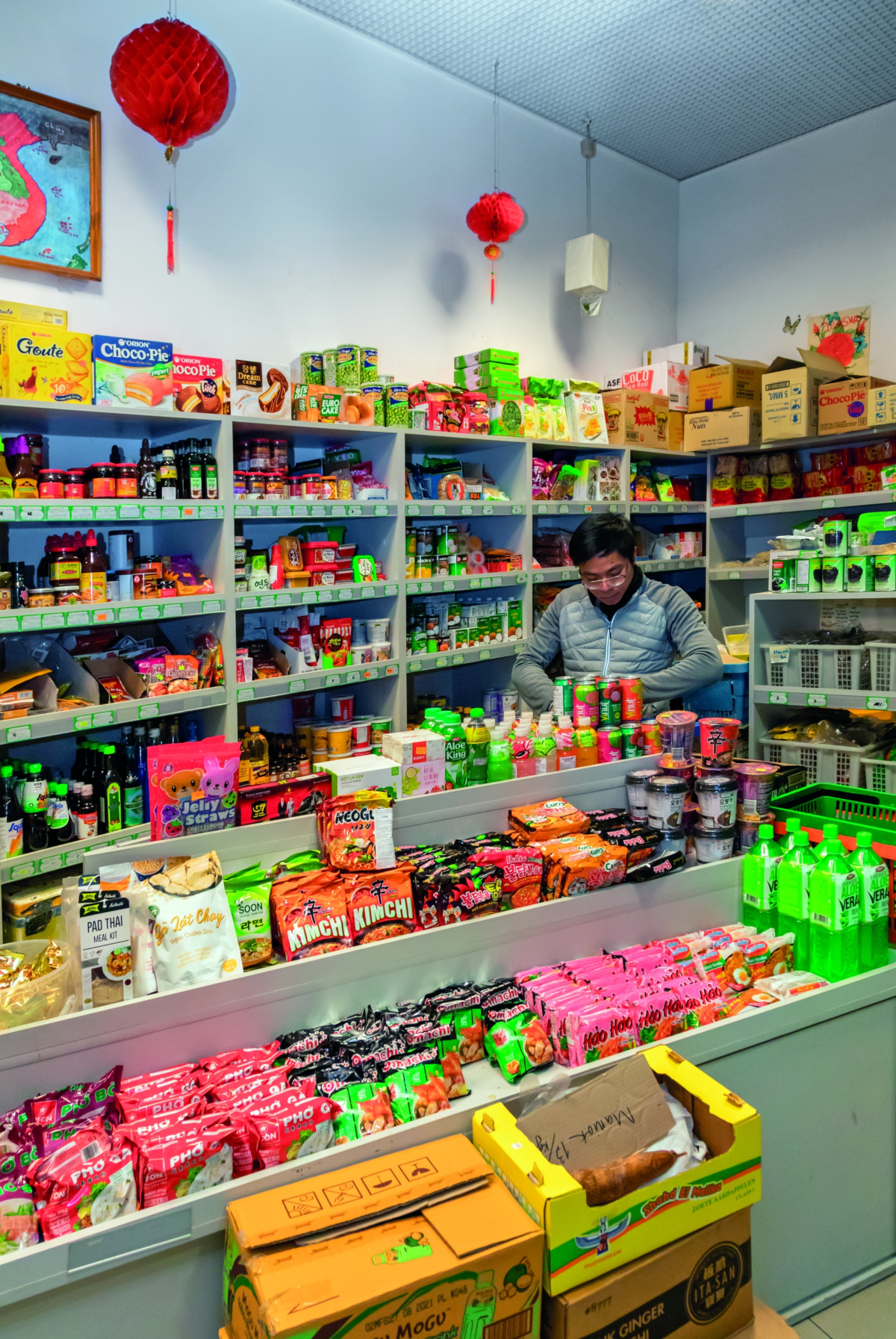
The text by Betina Fekser was originally published in the catalog accompanying “This Blood Is for You”, Franciszek Orłowski’s solo show in MOCAK, Krakow. BLOK Magazine would like to thank the Author and the Artist for their permission and help to present their work on our website.
Franciszek Orłowski began the project This Blood Is for You in 2016. He invited people who were living in Warsaw but came from different cultural backgrounds to donate blood, which was for a Polish blood bank. Such participatory actions are the hallmark of this artist. He is fascinated and inspired by the process of immersion in the unique ambience of a given place or community. The participants in the projects become their co-creators. Much depends on their openness and readiness to undertake tasks, often demanding.
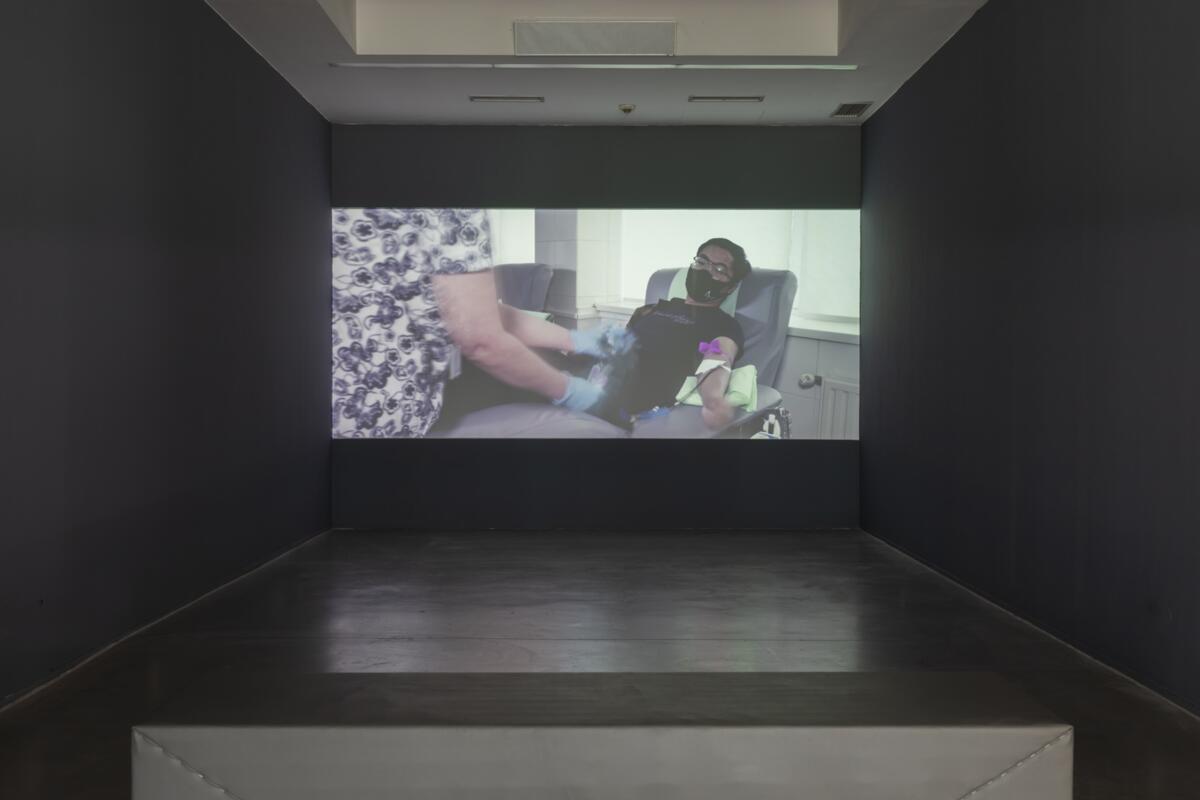
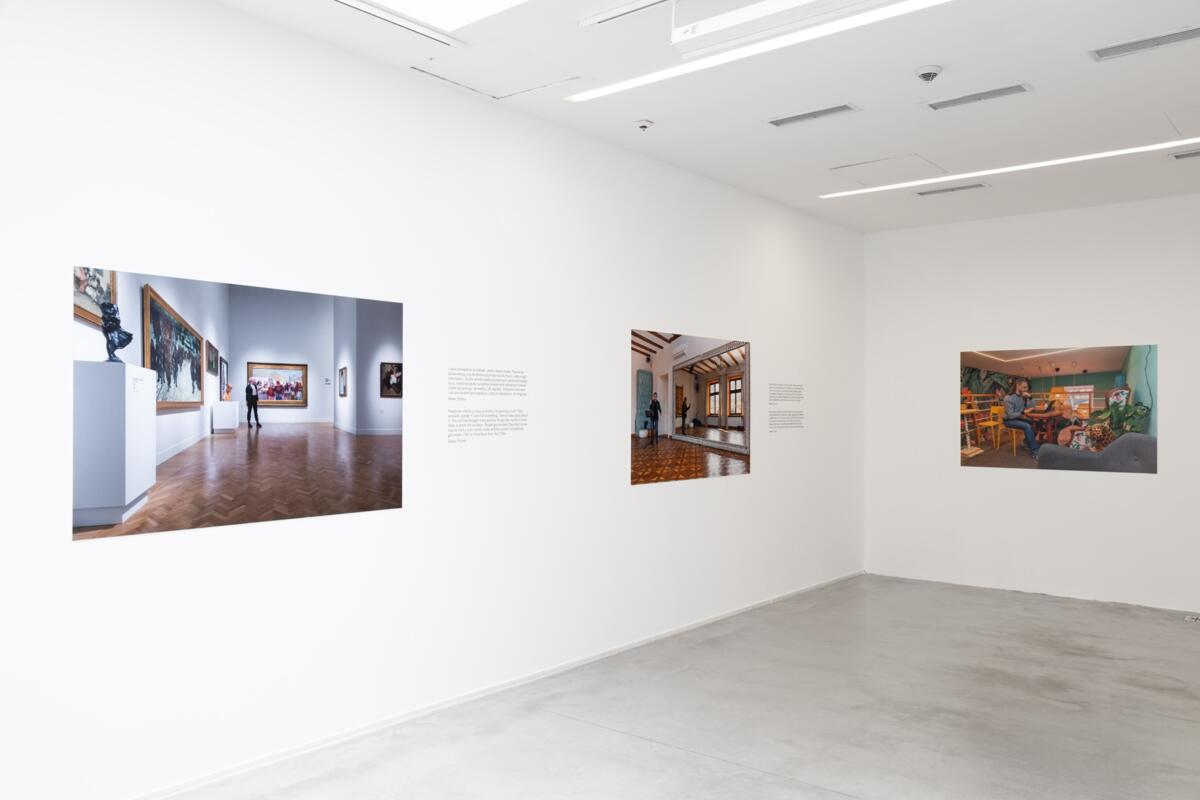
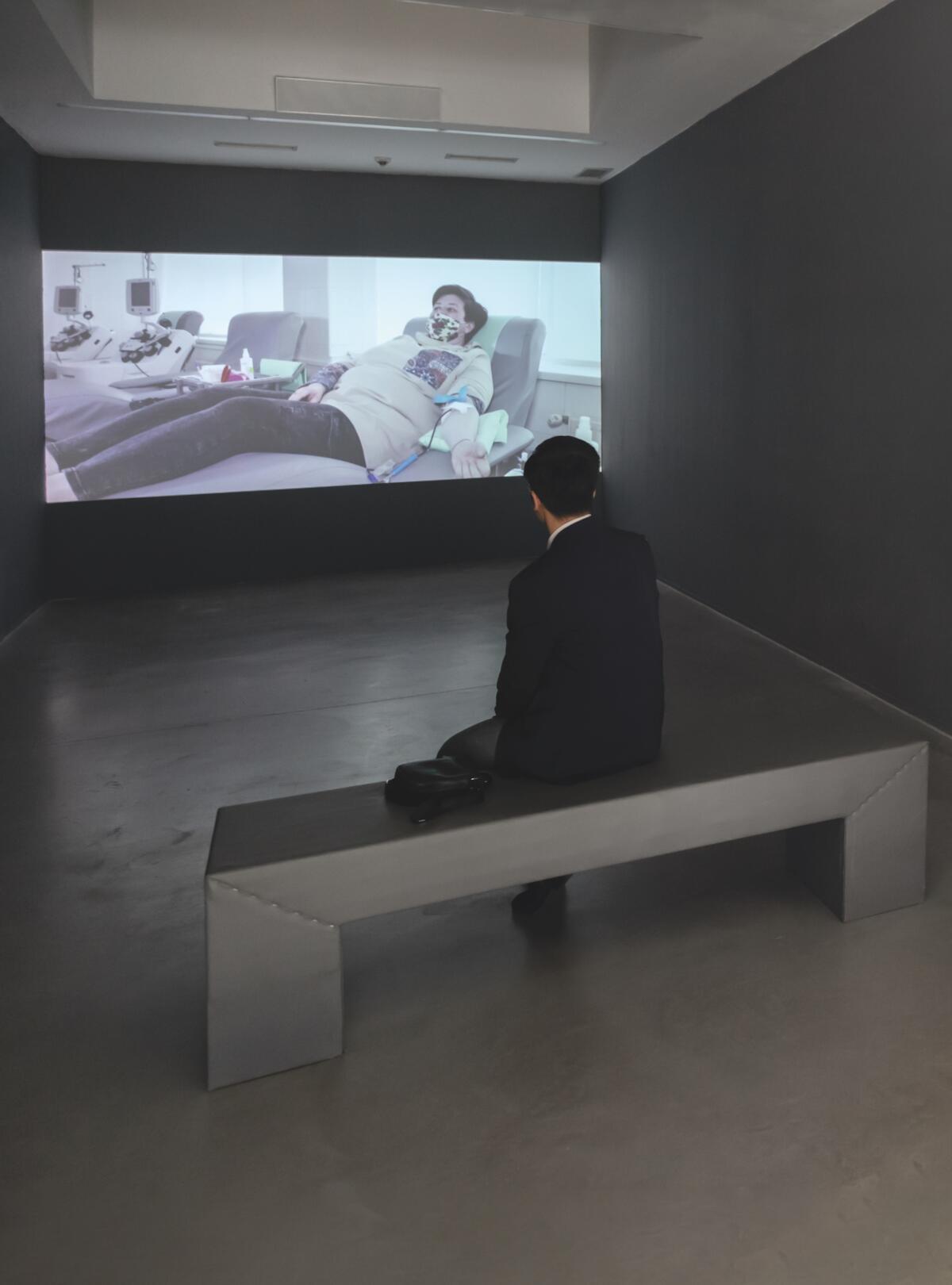
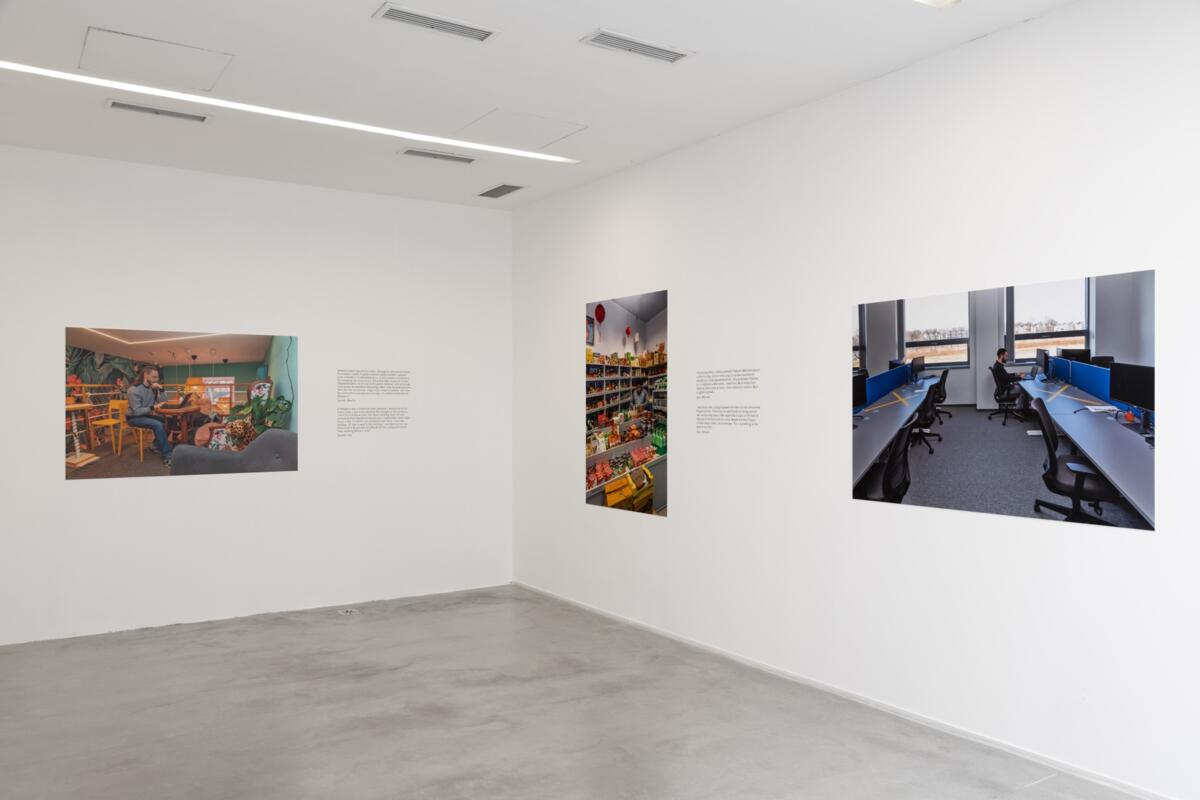
The first version of the project was created at the invitation of Waldemar Tatarczuk, curator of the exhibition Revolte: Ovidiu Anton / Franciszek Orłowski at the Austrian Cultural Forum in Warsaw. Two years later, in 2018, the artist repeated the project as part of the Revolve Performance Art Days festival, organised by the Uppsala Art Museum. In the interview[1] published in the catalogue, along with the documentation of both actions, Franciszek Orłowski talks about the details of working on these two editions, based on photographs taken at the respective blood donation points. The catalogue comprises documentation of the three versions of the project created so far[2], and enriched with photographs from the set at the Regional Centre for Blood Donation and Haematology (RCKiK) and the events accompanying the exhibition at MOCAK.
In preparing the exhibition at MOCAK, the artist turned to another medium. For the purposes of the exhibition, a video was made documenting the collection of blood from Krakow residents of various nationalities. This material was supplemented by photographic portraits of the participants at their places of work and conversations with them, fragments of which were included in the exhibition; the full versions of these can be found in this catalogue. The participants have contributed very personal stories, which greatly enrich the present edition of the project, revealing the realities of multicultural Krakow, about which some of its inhabitants know little. For this reason the artist decided to turn the spotlight on to selected participants and their stories. This is because personal accounts of specific people, with their everyday experiences, emotions and desires, affect the viewer more than generally outlined images.
In the Krakow edition of the project, six participants donated blood on 26 February 2022 at the RCKiK and agreed to take part in the recording. Photo sessions at their workplaces took place in March. Each participant has a unique story about living in Poland, and they share these experiences as part of the project.
Wassim, a Syrian composer, in 2015 founded the multicultural Choir in Contact, for which he was awarded the title of Krakow Ambassador of Multiculturalism. Quin, originally from Vietnam, runs a shop selling Asian products. Oliwia is a Muslim; she studies psychology and works in the National Museum in Krakow. Vitaly from Ukraine is doing an internship in one of Krakow’s logistics companies. Sveta from Belarus helps Ukrainian refugees at Krakow’s main railway station as a volunteer. Daniele from Italy works in an international corporation.
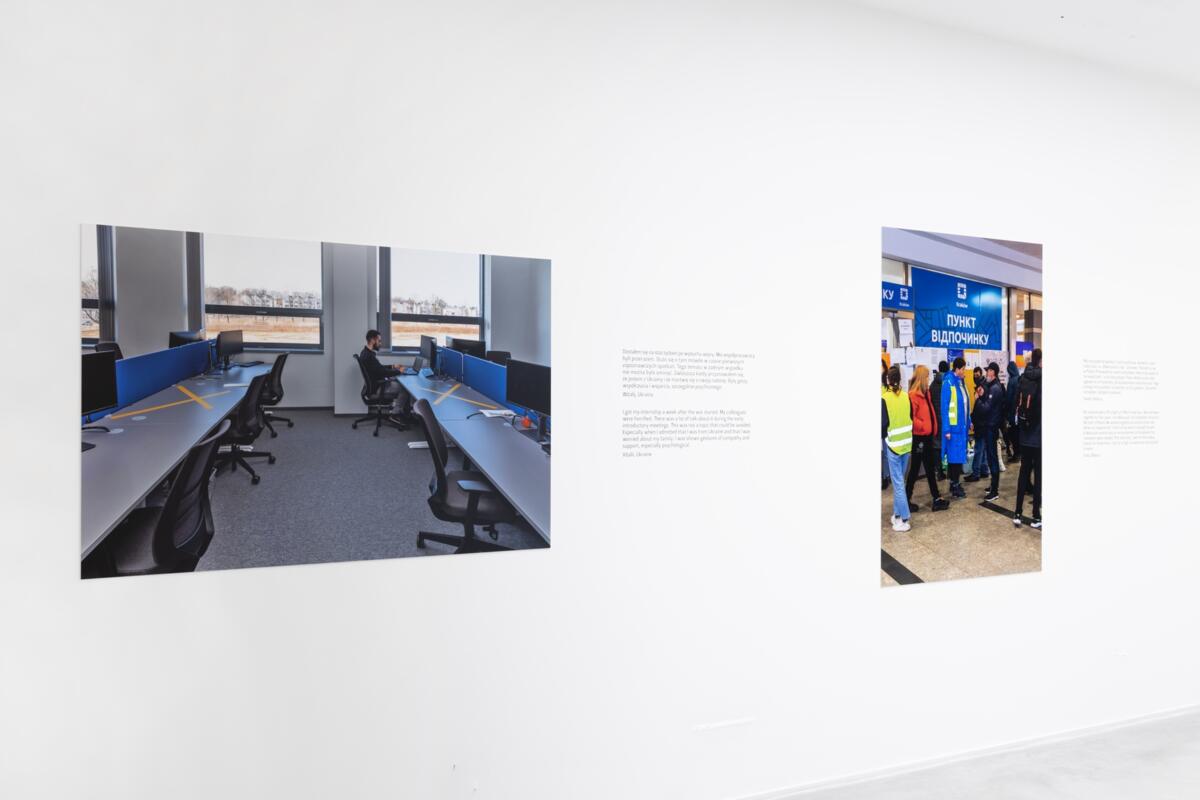

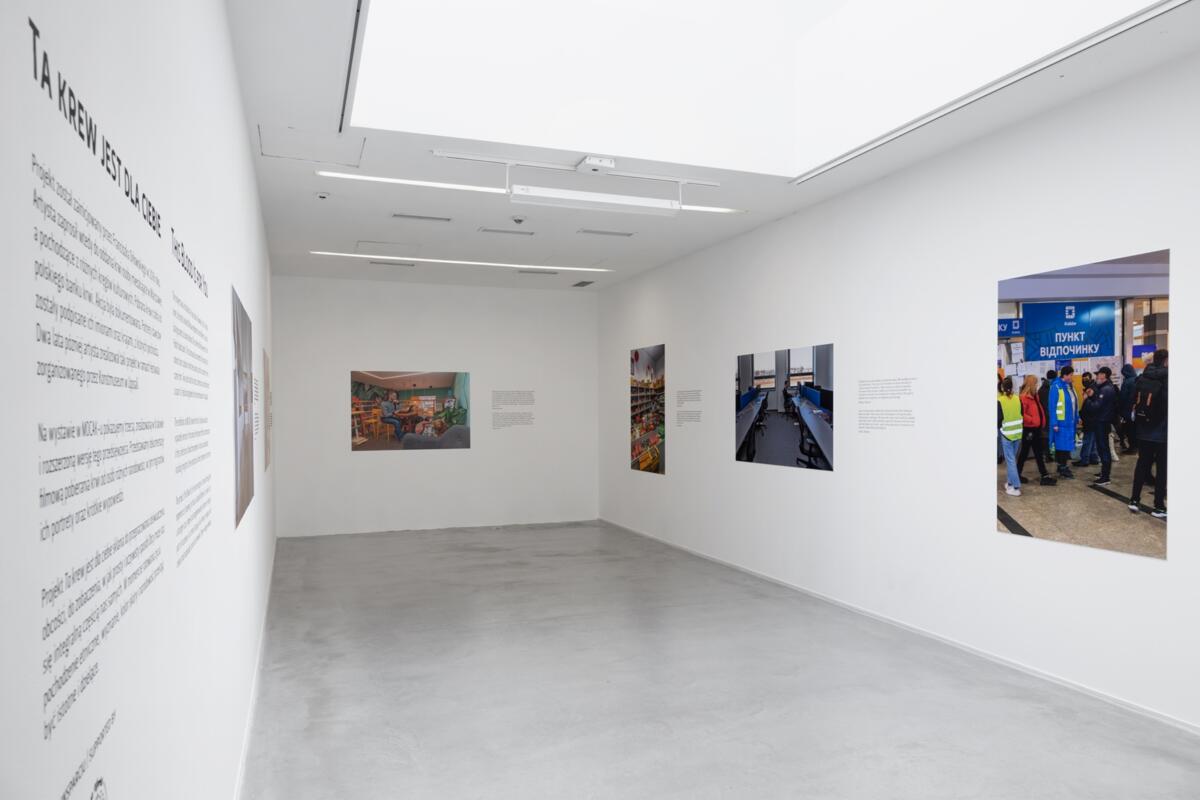
They are not the only ones to have participated in this project. There is Nora from Mexico, who, as a representative of the Fundacja One World – One Heart, has contributed her text for the catalogue and supported us in the implementation of the project.[3] The medical requirements did not, however, allow her to donate blood. The same goes for Seydou from West Africa, who has been running a veterinary clinic in Krakow for many years. This list is not complete – for the project is the whole process and all the situations that it comprises.[4] This also includes the preparation period from August 2021.
At that time, a humanitarian crisis was beginning along the Polish-Belarusian border. The media reported on a group of several dozen refugees from Iraq and Afghanistan, including small children, camped on the Belarusian side of the border with Poland, near Usnarz Górny in the Podlasie region.[5] At the beginning of September, the Polish Government declared a state of emergency in the border area. Shortly thereafter, preparations began for the construction of a barrier along the border. This humanitarian crisis has shown us with glaring clarity how topical this project is – with its leitmotif of the need for solidarity and openness towards other people regardless of their nationality or origin. Its relevance hit us fully on 28 January 2022, when we were shooting test footage at the RCKiK headquarters in Krakow. On that day, seven volunteers signed up to donate blood, including the aforementioned Seydou, as well as Felipe from Brazil, Luis from Venezuela, Chandu from India, and Yiyu from China.
One of the basic requirements for donating blood in Poland, apart from satisfying various health criteria, is being able to communicate in Polish sufficiently to fill in the donor form and to be interviewed by a doctor in order to qualify for making the donation. In the event, the medical interview did not take place that day for most of the volunteers. All the participants were told to fill in the multi-page form, and required to do so at the reception window where a queue of other people had gathered. The registrar repeatedly asked each participant about the adequacy of their language skills – even a Chinese scholarship student of Polish studies who spoke perfect Polish. The atmosphere was stressful and unpleasant. Polish would-be donors were allowed to fill in their form with less pressure, away from the window. When asked what the procedure was and why it seemed to differ for different applicants, the registrar replied: ‘It depends on the case.’ The actual recording was made a month later, two days after the outbreak of the war in Ukraine. By then, the situation was completely different. Each donor, regardless of their background, was able to fill in the form away from the window.

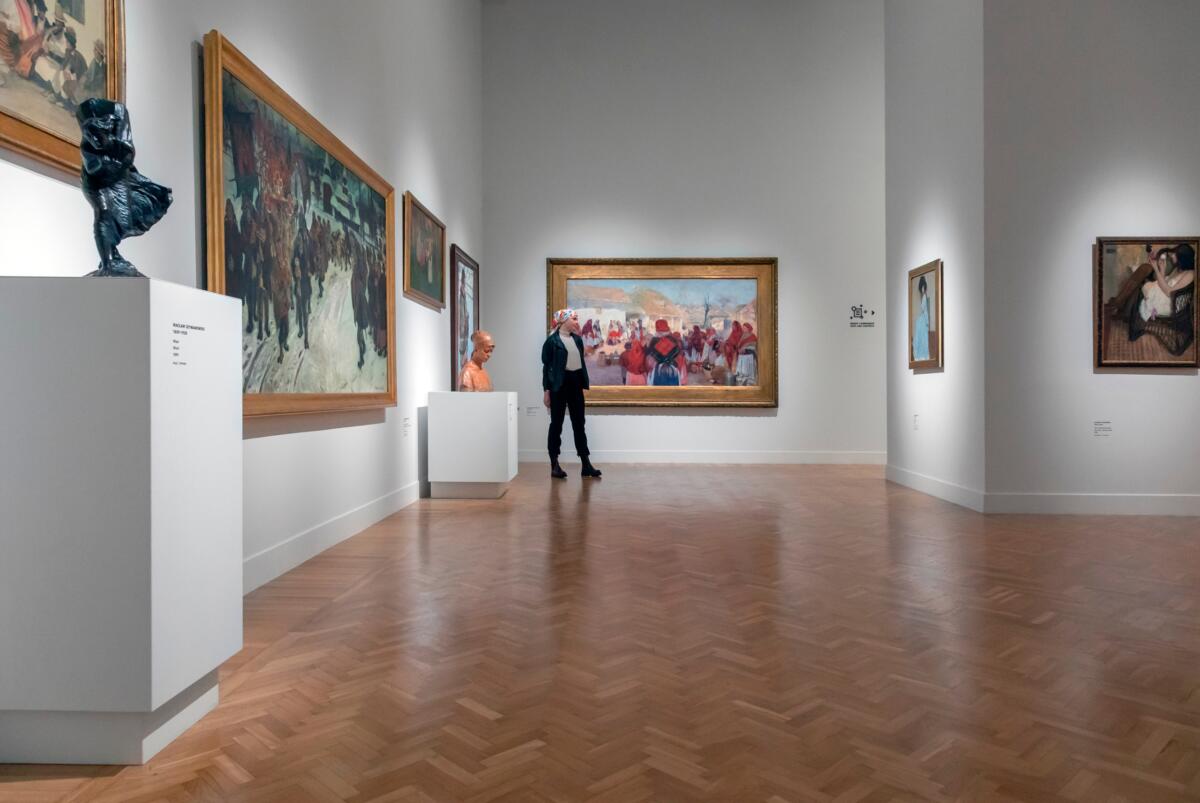
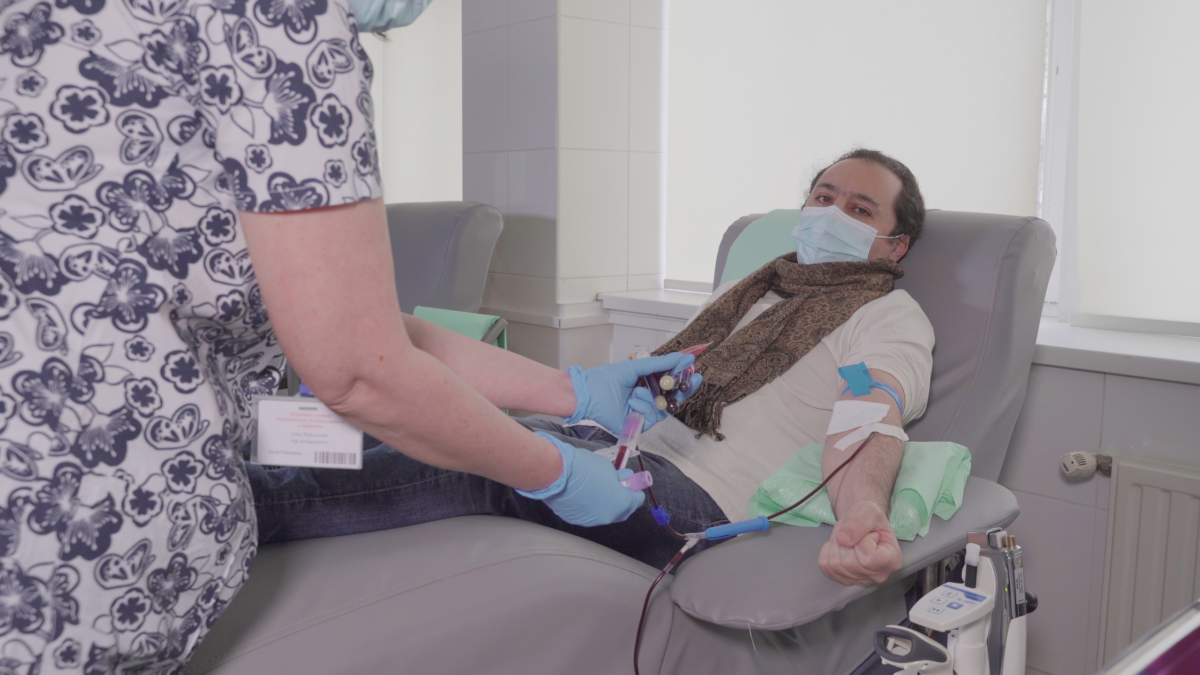
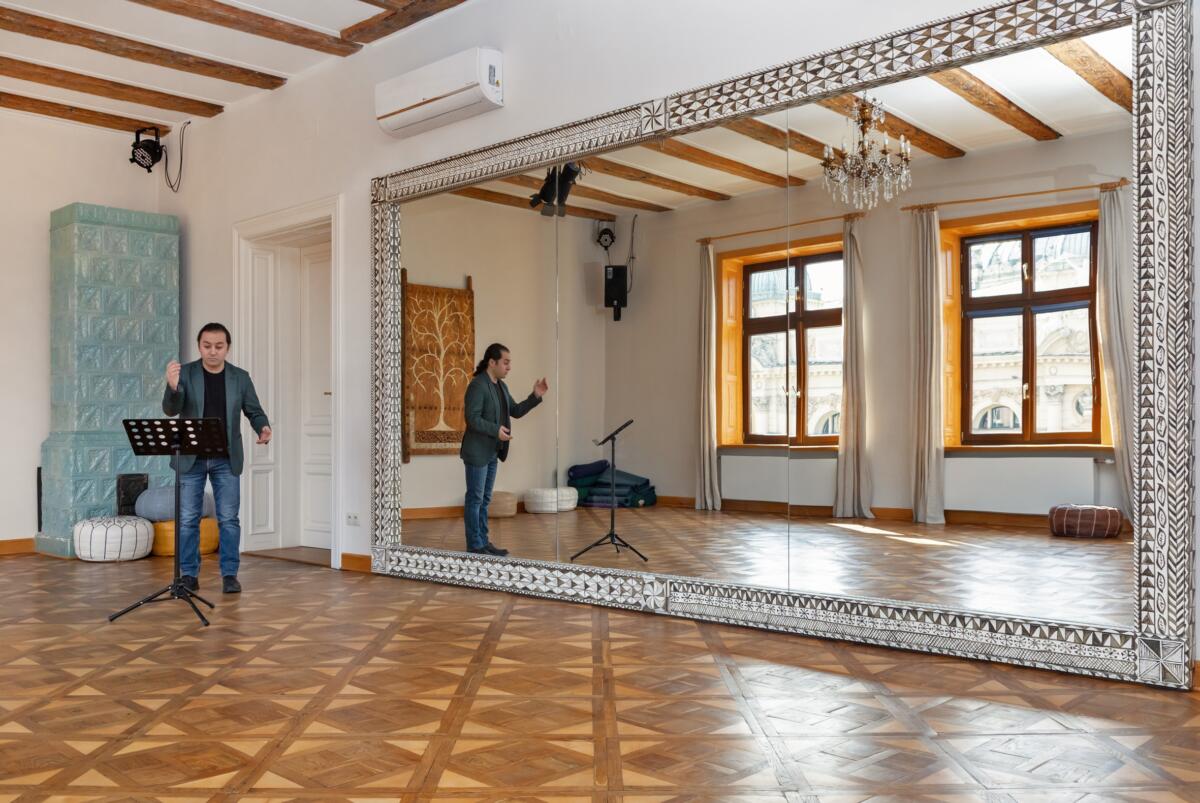
Franciszek Orłowski’s approach is close to Charles Taylor’s principle of equal respect, which the researcher articulated in his article The Politics of Recognition[6], which relies on learning about the history of the other. In Taylor’s view, society’s recognition of the value of a minority culture is crucial to the identity of its members. Providing a demeaning or limiting image, or ‘inappropriate recognition of others’, is a form of oppression.[7] W.J.T. Mitchell – whose article Migration, Law and the Image: Beyond the Veil of Ignorance has been included in the catalogue – points out that, in a sense, images arrive in various places before actual migrants or refugees, and they encapsulate their stereotypical representations or identikits.[8] The researcher notes that this happens, for example, when a migrant crosses the border: showing their identity document, they present themselves as both an image and a text that precedes their personal history. This is why it is so important to reverse the order and give voice to the migrants themselves, rather than allowing them to remain trapped in a vicious circle of stale associations and stereotypes.
Iza Klemenowska’s[9] essays are based on her fieldwork and interviews with migrants. In the text Migrations, published in this catalogue, she presents stories of people who have come to live in Poland from various parts of the world – Nidal from the West Bank, Muslim from Chechnya or Shirin from Iran. In each of their stories, the leitmotif of this project looms large – blood, often appearing in the visceral context of traumatic physical injury, yet with huge symbolic potential. ‘Blood. Nidal remembers clearly what it looked like in the snow. His own. Bright red, like carmine paint.’[10] ‘Muslim had never felt such pain in his life. He lost so much blood that there was enough to fill a large bowl.’[11] But also blood as a precious gift for others: ‘ Could I donate blood to those in need? Of course! I donate blood every six months,” Shirin explains.’[12]
Franciszek Orłowski draws attention to such expressions as ‘blood brotherhood’ or ‘blood pact’. He found the symbolism associated with brotherhood particularly inspiring while working on this project. At the instant of saving a human life, ethnicity, religion, skin colour and nationality cease to matter. They are no longer divisive. Nora E. Huerta Flores evocatively encapsulates this symbolism of brotherhood through blood in the title of her text published in this catalogue: Multicultural Interconnection through Our Veins: A Gift of Life, a Gift for Life[13]. In a profound sense, this touches the heart of the project: the readiness of foreigners to help the community in which they live.



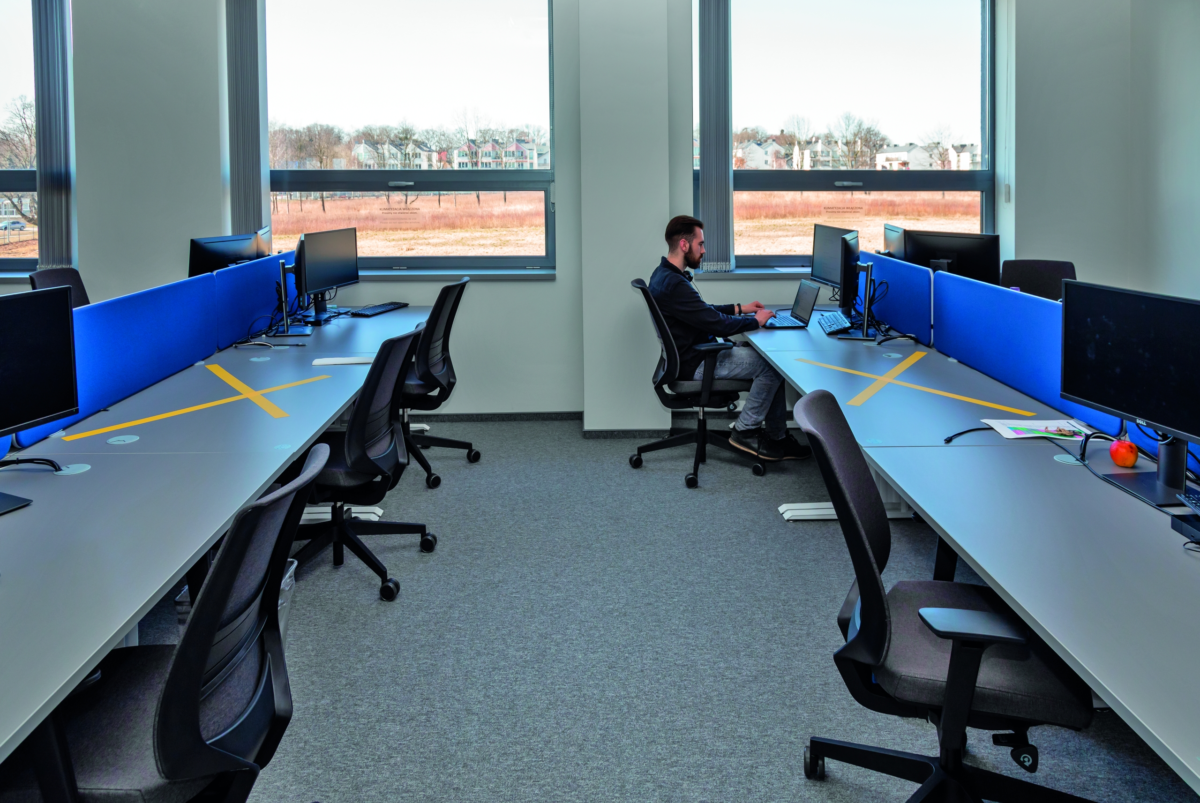
One of the fundamental tasks facing contemporary social culture is to develop methods of communicating with and befriending those who are ‘temporarily strangers’. At the MOCAK exhibition, this has been made possible in a number of ways – through film, photographs and texts. Submitting oneself to the inconvenience and stress of donating blood – giving to others a unique life-saving element – is an eloquent proof of human solidarity. An important aspect of Franciszek Orłowski’s project was to reveal, at least to some extent, the identity of the blood donors, in order to make the public, thus its potential recipients, aware of its origin.
The participants donated their blood to Poles. Our nation, in its majority, is not favourably disposed towards strangers. We have a problem identifying with people from other cultures. The project This Blood Is for You encourages us to process, and empathise with, the experience of people from other cultures, whilst making us realise how naturally The Other can become an integral part of ourselves.
Translated by Anda MacBride
[1]‘I Am Able to Get into the DNA of a Place…’, in present publication, pp. 56–62.
[2]See pp. 105–139 in present publication.
[3]I would like to express my gratitude to Anna Lichnerowicz and Monika Śledź-Pacheco from the Board of the Foundation for their support in the implementation of this project.
[4]‘I Am Able to Get into the DNA of a Place…’, op. cit.
[5]A. Mikulska, „Zakładnicy w politycznej grze”. Polska od tygodnia zmusza ludzi do koczowania na granicy, 19.8.2021, Krytyka Polityczna, /cutt.ly/LKN2NPE.
[6]Ch. Taylor, The Politics of Recognition, in: idem, Multiculturalism and the Politics of Recognition, Princeton University Press, Princeton 1992, pp. 25–73.
[7]Ibidem, p. 25.
[8]W.J.T. Mitchell, Migration, Law and the Image, in present publication, pp. 86–103.
[9]Iza Klementowska is the author of a collection of journalistic accounts Skóra. Witamy uchodźców, Wydawnictwo Karakter, Kraków 2019.
[10]I. Klementowska, Migrations, in present publication, p. 40.
[11]Ibidem, p. 42.
[12]Ibidem.
[13]See N.E. Huerta Flores, Multicultural Interconnection through Our Veins, in present publication, pp. 24–30.
Imprint
| Artist | Franciszek Orłowski |
| Exhibition | This Blood Is for You |
| Dates | 28.04.2022 - 16.10.2022 |
| Curated by | Betina Fekser |
| Index | Anda MacBride Betina Fekser Franciszek Orłowski MOCAK |
